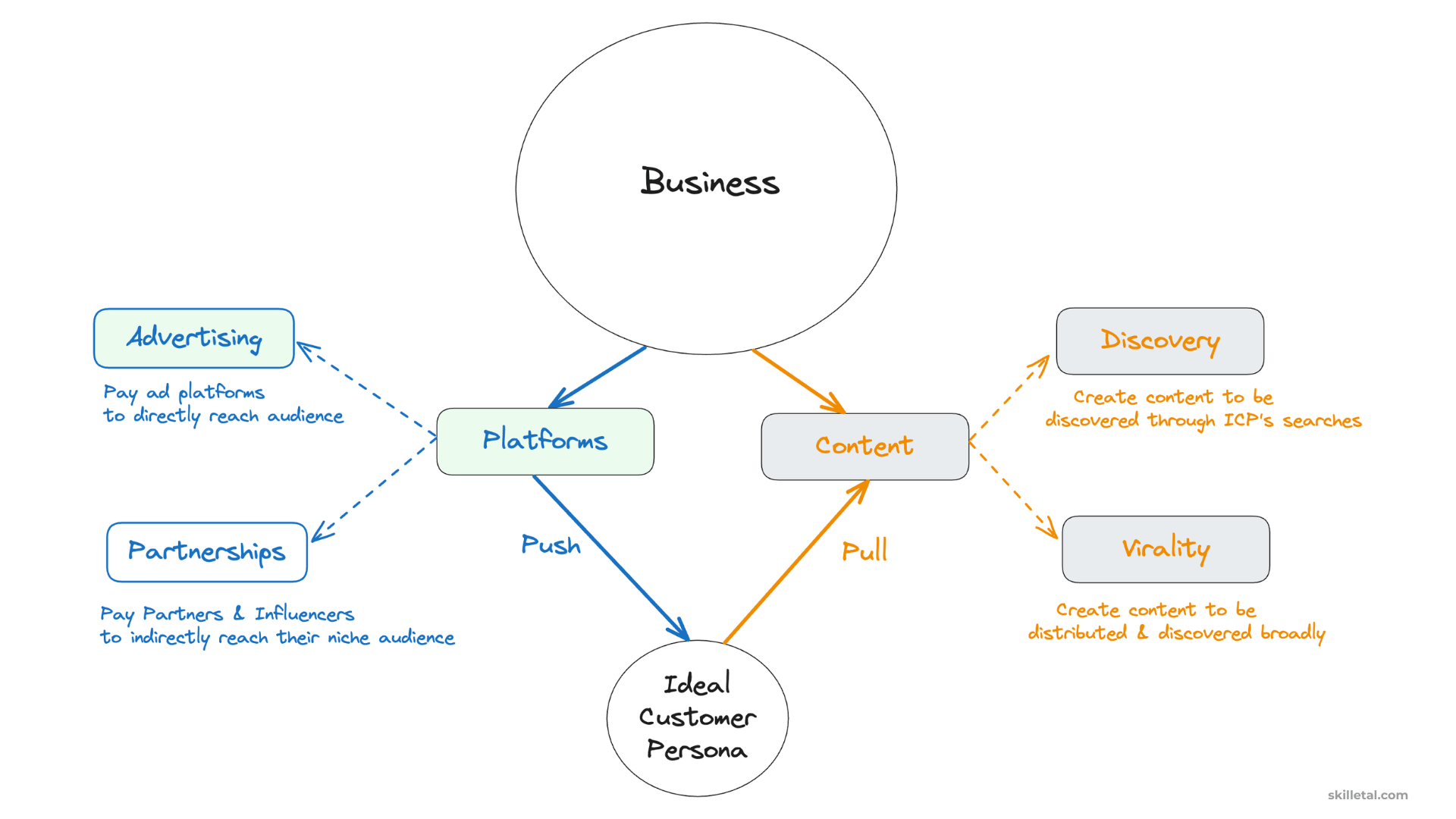What are Paid Advertising Channels?
As we transition from discussing Pull Channels to Push Channels in user growth strategies, we turn our focus to Paid Advertising Channels. These channels are a cornerstone of direct marketing for many businesses.

Overview of Paid Advertising Channels:
Paid Advertising Channels involve businesses paying to showcase their ads. Predominant platforms include Google Ads, Meta Ads (Facebook and Instagram), and Amazon Ads. These platforms have historically held substantial portions of the digital advertising market, with Google and Meta leading in terms of reach and versatility.
Examples and Market Dynamics:
For instance, Google Ads offers a wide range of advertising solutions from search ads to YouTube ads, while Meta Ads provide targeted options on social media. Amazon Ads has become increasingly prominent, especially for product-related advertising in the e-commerce sector.
Which Businesses Suit Paid Advertising:
Paid Advertising is well-suited for businesses with clear monetization strategies where the cost of acquisition is offset by the customer's lifetime value.
For example, an e-commerce site with a high average order value can recover advertising costs from initial purchases. Similarly, a B2B SaaS company might use LinkedIn Ads effectively, given their higher customer lifetime values.
Conversely, businesses like early-stage startups without significant revenue or those targeting very niche markets with low average revenue per user might find paid advertising challenging. The costs involved require a well-defined strategy to ensure a return on investment.
Effectively leveraging Paid Advertising Channels requires a careful balance of cost, targeting, and an understanding of customer value to achieve optimal user growth.